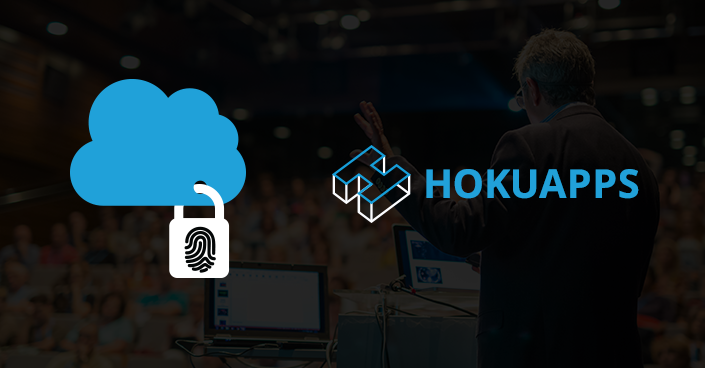- Products
- Solutions
- Services
- Resources
- Customer Success
- Company
- Sign In
- Contact Us

Digital Transformation enabler helping enterprises evolve by connecting technology
Take a look at upcoming webinars and special events
HokuApps news and media coverage
Be with the best. Solve real problems
Get in touch with our experts here
Explore our extensive collection of online resources here
Information and insight on transformation to the Digital Workplace
Quick Guides provide concise information on a variety of topics
Discover the essence of HokuApps’ products
Learn all about HokuApps’ cutting-edge enterprise mobility technology

Access to data stored is a universal problem that businesses, regardless of their size, face. Before the initiation of cloud technology, data was stored on-premise. In today’s global business scenarios, data is stored across various disparate sources like Customer Relationship Management (CRM) and Enterprise Resource Planning (ERP) systems, to spreadsheets and social media analytics. An effective data integration strategy for data-driven transformation of business is the solution.
Today’s businesses are striving to get onto the digital business transformation bandwagon by adopting a data-driven business decision-making process. The key lies in providing relevant insights into the business with verifiable data collected from various sources. This calls for interactive reports that give information based on specific parameters. But without a credible data integration process, executives and managers will have access to inaccurate data and will hence lead to error-prone decision making.
Keeping the relation between data and data-driven decisions in mind, data is the most significant strategic asset for any business. Digital business transformation through a credible data integration strategy translates to merging data from disparate silos and creating it into structured metadata in real-time.
Managers and executives face an uphill task trying to scrutinize through rows of data that a business encounters on a day-to-day basis. By eliminating data silos, executives and managers get access to varied information based on parameters that they have specified to make informed decisions. This approach leaves executives a lot more leeway to make decisions based on relevant information, freeing them from the complexity of finding information so that productivity can be enhanced to drive value.
Give your employees your service data from your app and let them make decisions as they interact with customers. Employees thus become co-developers of the app as they adapt and improve customer service. Data integration through a reliable integration platform service provider make sure that data is actionable in day-to-day operations so that managers and others can make informed decisions without wasting time.
It so happens that in many businesses without appropriate data integration your many of your employees are working on the same set of data on the same issue. By keeping data silos integrated within departmental systems, the ecosystem is primed for redundancy which will affect operations at the functional level as well as at the granular level. Same data may even be recorded in multiple spaces in distinct systems with no real-time syncing options.

A data integration process ensures that data is across distinct channels maximizing opportunities for data and silos to work in conjunction with one another. The result is maximum visibility to the right user groups for visibility into operations. This drives collaboration with your organization as transparency extends to the workforce internally, and externally to the stakeholders.
Different types of data are garnered from different silos. Maximize your data value by leveraging varied data to find solutions to unique challenges that you come across in your day-to-day business working. The data that we refer to relates to structured databases, spreadsheets, infographics, social media reports and technical documents. And as more devices come within reach of the business’s ecosystem, expect more data to percolate into your ecosystem.

Not every data integration strategy is straightforward. Strategies vary depending on each business’s requirements. HokuApps’ data integration platform features purpose-built tools that are designed without re-coding every component and modules to transform your business into a well-oiled machine.
Data is streamlined with Cloud-based solutions to bridge the gap between apps while giving your workforce the tools to share information. These apps will then help bring data together without you handling the technical burden of hosting the app and handling the security of the data warehouse. Data integration requires keeping up with customer demands with minimal expenses while offering communications with emerging technologies.
The challenge of data integration is divided into three major segments:
Since the plan itself is to integrate data assets from distinct silos, the initiative should be driven by a data integration partner who knows the tricks of the trade and is reliable enough to map a successful route to fit the business’s long-term vision. The app requirements documents should include these salient points:
After a detailed map is put into place, a practical study is to be conducted to choose the best process and tools for the business’s transformation. There are several subcategories that make up this stage. They are:
And when implemented, the data stored in the data warehouse is cleaned, categorized and pre-prepped for analysis. The solution is scalable and the technology is cutting edge.
No implementation is complete without an arduous testing phase to ensure that every stage of integration is accurate and synched (up-to-date). The three most important testing tests include:
No matter the size of your business, the complexity of your business operations, the amount of collated data or the number of different data silos that your business is connected to – data flows and analysis enhances decision making in multiple forms by predicting trends and so on. Let technology become an enabler so that you can stay ahead of your competition with fast and agile mobile app solutions with HokuApps.
HokuApps’ Data Integration Platform break down silos for better visibility into the business by integrating your business with internal systems and third-party apps while ensuring instant integration.
For more information on HokuApps’ Data Integration Platform and services, talk to our experts here…